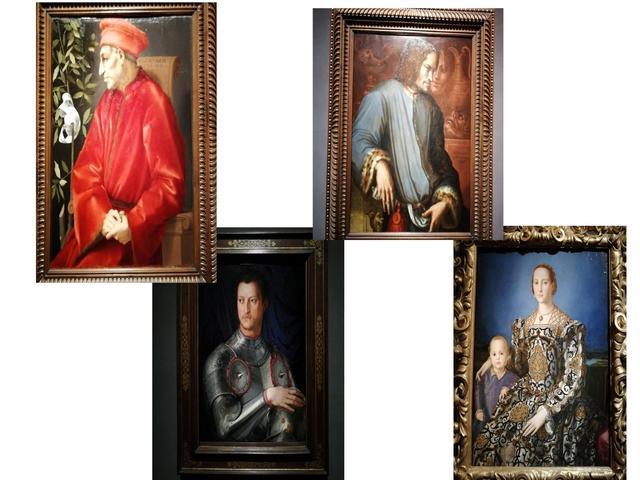Portrait of Eleanor of Toledo

The Portrait of Eleanor of Toledo and Her Son is a painting by the Italian artist Agnolo di Cosimo, known as Bronzino, completed ca. 1545. One of his most famous works is considered one of the preeminent examples of Mannerist portraiture. The painting depicts Eleanor of Toledo, the wife of Cosimo I de' Medici, Grand Duke of Tuscany, sitting with her hand resting on the shoulder of one of her sons. This gesture, as well as the pomegranate motif on her dress, referred to her role as a mother. Eleanor is wearing a heavily brocaded dress with black arabesques. In this pose, she is depicted as the ideal Renaissance woman. The painting is the first known state-commissioned portrait to include the ruler's heir. By including the boy, Cosimo wanted to imply that his rule would bring stability to the dukedom.
The child has been identified as Eleanor's son Francesco (born 1541), Giovanni (born 1543) or Garzia (born 1547). If the subject is the latter, the portrait must be dated around 1550-1553, but the date is usually assigned to c. 1545, based on an examination of the evolution of Bronzino's style, which would suggest Giovanni.
The portrait has been called "cold", reflecting the sober formality of Eleanor's native Spanish court, without the warmth normally expected from a portrait of mother and son. Such distancing is typical of the Mannerist school's rejection of naturalism. By contrast, Eleanor's elaborate brocaded velvet dress, with its mass bouclé effects of gold weft loops in the style called riccio sopra riccio (loop over loop), is painstakingly repeated. The painting is perhaps an advertisement for the Florentine silk industry, which had fallen in popularity in the difficult early years of the 16th century and was revived in the reign of Cosimo I. The precious golden belt, decorated with jewels and beads with a tassel , may have been made by the goldsmith Benvenuto Cellini.
© Tourblink